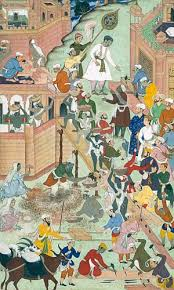Art of the Mughal Empire: A Fusion of Cultures

Exploring the Richness of Mughal Art: A Glimpse into India’s Golden Age The Mughal Empire, which spanned from 1526 to 1857, is remembered not only for its military conquests and political achievements but also for its profound influence on South Asia's cultural and artistic development. This period, marked by the reigns of emperors like Akbar, Jahangir, and Shah Jahan, brought together Persian, Central Asian, and Indian artistic traditions, creating a unique and richly textured visual language that continues to inspire artists and historians alike. During this time, miniature paintings, textiles, and monumental architecture flourished under imperial patronage, contributing to the empire's lasting cultural legacy. Through the works featured in this exhibit, we explore the vibrant artistic world of the Mughal Empire, showcasing its enduring influence on both India and the wider world. The works I chose offer a glimpse into the lavish artistic and cultural world of the Mughal Empi...



